Topics
Category
Era
Frank Schott Barn, Stevens County
The stone barn built by German immigrant Frank Schott in 1923 is a prime example of innovative Midwestern architecture. The barn, located just southwest of Chokio, stands out above the fields near the Stevens and Big Stone County lines. Many feel it serves as a reminder of the determination and skills of the immigrants who did their own building throughout the Midwest. Though the barn’s wooden roof collapsed in 1993, its stone walls remain standing in the early twenty-first century.
Frank Schott was born in 1880 in Lestkov, Bohemia (the Czech Republic since 1993). Through training from his father and a German university education in architecture and engineering, Schott developed unique skills as a builder, cement contractor, and carpenter. Conscripted into the German army in 1900, he was not made for military life. In 1907, rather than return to service after leave, he obtained a fake passport and immigrated to the United States.
Schott met his future wife, Sophie Barth, at her father’s restaurant in Black River Falls, Wisconsin. The couple married and moved to Minnesota, where they raised seven children near Chokio. Schott also learned how to farm.
As he became familiar with the area, Schott identified plots of land with soil characteristics that would produce quality cement. He was said to know when cement slurry was ready by taste, and would adjust its lime content until the balance was just right. His cement work was famous for lasting a lifetime without cracking.
After the family’s wooden barn was destroyed in a storm, Schott set out to build lasting replacement structures. These would not only support his family by sheltering their animals and crops, but also allow him to express his creativity and sense of pride.
The property consisted of the original house, the chicken house, and then the barn. The chicken house, named “Castleswanhill,” was the first structure to be completed. Rocks used in the construction of both the barn and the chicken house came from the Schotts’ fields, neighbors’ fields, and rock piles.
One particularly big boulder required four horses and the family’s tractor to pull it to the construction site. Schott, who could tell a rock’s weak spots by looking at it, used a stone hammer to break down the largest boulders. Special sand used for the barn was hauled from Lake Hattie, about nine miles from the farm.
Construction on the barn’s foundation began in 1923. Rocks and cement were applied eighteen inches thick to an inner frame to form the outside walls. As the walls grew taller, horses and a tractor pulled rocks by means of a block and tackle onto a platform. From there they were moved into place with a crowbar.
The second floor of the barn is held in place by iron I-beams that run the length and width of the floor. Other iron beams hold the cement in place. The center of the loft floor is as thick as eight inches, tapering off to six inches on the outside walls. The feedway, floor, gutter, and water troughs are made of cement. Enclosed cement steps curve upstairs to the milking area.
Elegant towers located on the barn’s four corners and in the center of the front and back ends testify to Schott’s creative talent. Both aesthetic and functional in nature, they allow cool air to pass into and out of the barn year round. They were built by pouring cement around wooden forms.
The barn took almost twenty years to build due to Schott’s busy work schedule. Once the slow process of laying the foundation was completed, however, the first floor of the barn was finished within months. The Schotts were then able to house the family’s cattle and horses.
The Schott family discontinued their use of the barn in 1970s. Without livestock inside to maintain a steady humidity and temperature, expansions and contractions in the wood caused the structure to weaken, and its roof collapsed in 1993. In 2014, only the barn’s walls and the pump house remain standing.
While the barn may no longer be hospitable for livestock, the structure still serves a purpose. It has been adopted by barn swallows that use it as a shelter for raising their young.
Bibliography
Miller, Rhonda. E-mail message to author, November 27, 2014.
Ritter, Carol. Progress on the Prairie – Chokio Centennial 1898–1998. Alexandria, MN: Echo Publishing, 1998.
Schmidt, Valerie. “Stone barn reflects craftsmanship and pride.” Sodbuster, May 11, 1985.
Quaternary Geology of Minnesota. St. Paul: University of Minnesota, 1996.
Minnesota Digital Library, Minnesota Reflections. Stone barn, near Johnson. Originally found at: http://reflections.mndigital.org/cdm/singleitem/collection/bsc/id/2485/rec/15
Minnesota Digital Library, Minnesota Reflections. Stone barn, near Johnson. Originally found at: http://reflections.mndigital.org/cdm/singleitem/collection/bsc/id/2484/rec/14
Related Resources
Primary
Schott Family Barn photos and article collection, 1920–2004
Photograph and newspaper collection, Stevens County Historical Society, Morris
Description: The collection contains photographs that have been taken of the Schott barn and its surroundings and holds copies of newspaper article coverage the farm has received beginning in the early 1920s.
Secondary
Ringsak, Russ, and Denise Remick. Minnesota Curiosities: Quirky Characters, Roadside Oddities & Other Offbeat Stuff. 3rd ed. Curiosities Series. Guilford, CT: Globe Pequot Press, 2013.
Webb, Rebecca. “Barn Batty.” Senior Perspective, March 2004.
Related Images
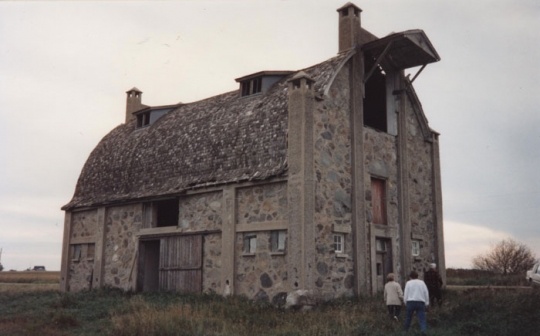
Schott Barn with roof intact
Public domain
Holding Location
Articles
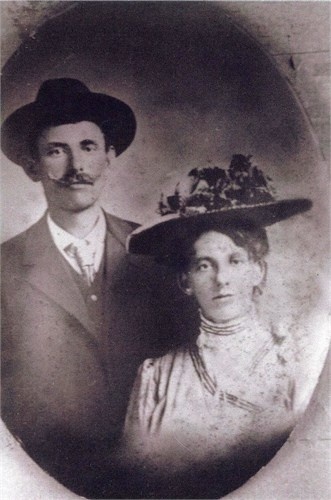
Frank Schott and Sophia Barth Schott
Public domain
Holding Location
Articles
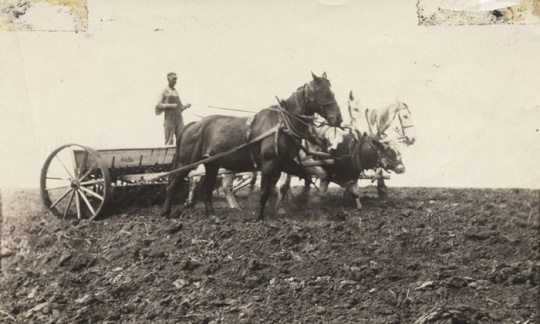
Frank Schott drilling grain
Public domain
Holding Location
Articles
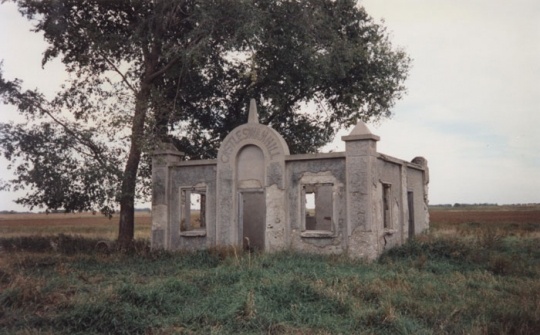
Castleswanhill (chicken house)
Public domain
Holding Location
Articles
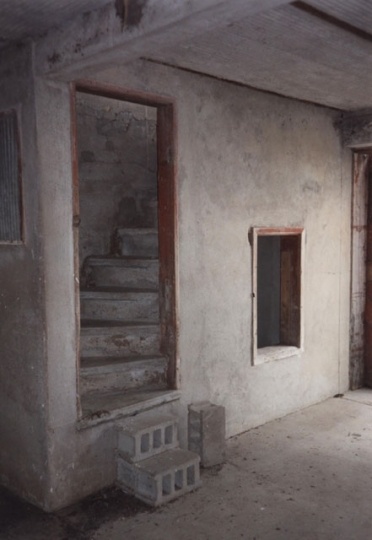
Schott Barn interior steps
Public domain
Holding Location
Articles
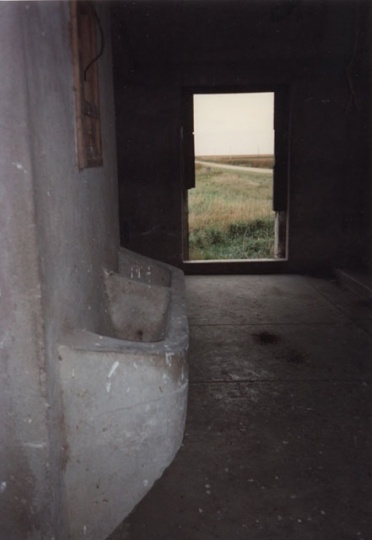
Schott Barn interior trough
Public domain
Holding Location
Articles
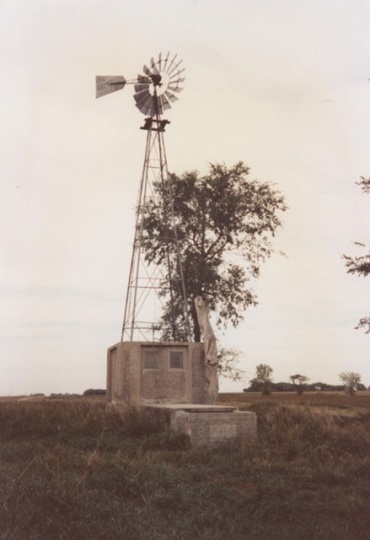
Schott Barn windmill
Public domain
Holding Location
Articles
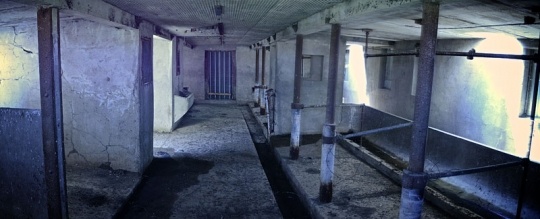
Schott Barn interior
All rights reserved
Holding Location
Articles
More Information
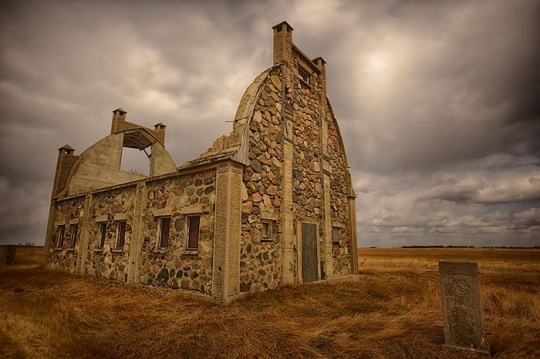
Schott Barn exterior (rear)
All rights reserved
Holding Location
Articles
More Information
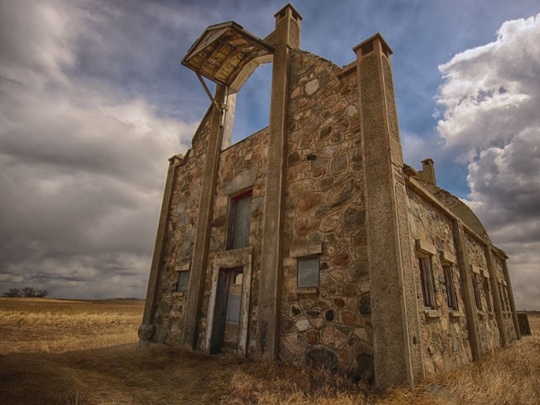
Schott Barn exterior (no roof)
All rights reserved
Holding Location
More Information
Turning Point
After his family’s wooden barn is destroyed in a storm in the early 1920s, Frank Schott sets out to build lasting replacement structures to shelter his animals and crops.
Chronology
1880
1907
1923
1942
1970s
1993
Bibliography
Miller, Rhonda. E-mail message to author, November 27, 2014.
Ritter, Carol. Progress on the Prairie – Chokio Centennial 1898–1998. Alexandria, MN: Echo Publishing, 1998.
Schmidt, Valerie. “Stone barn reflects craftsmanship and pride.” Sodbuster, May 11, 1985.
Quaternary Geology of Minnesota. St. Paul: University of Minnesota, 1996.
Minnesota Digital Library, Minnesota Reflections. Stone barn, near Johnson. Originally found at: http://reflections.mndigital.org/cdm/singleitem/collection/bsc/id/2485/rec/15
Minnesota Digital Library, Minnesota Reflections. Stone barn, near Johnson. Originally found at: http://reflections.mndigital.org/cdm/singleitem/collection/bsc/id/2484/rec/14
Related Resources
Primary
Schott Family Barn photos and article collection, 1920–2004
Photograph and newspaper collection, Stevens County Historical Society, Morris
Description: The collection contains photographs that have been taken of the Schott barn and its surroundings and holds copies of newspaper article coverage the farm has received beginning in the early 1920s.
Secondary
Ringsak, Russ, and Denise Remick. Minnesota Curiosities: Quirky Characters, Roadside Oddities & Other Offbeat Stuff. 3rd ed. Curiosities Series. Guilford, CT: Globe Pequot Press, 2013.
Webb, Rebecca. “Barn Batty.” Senior Perspective, March 2004.











